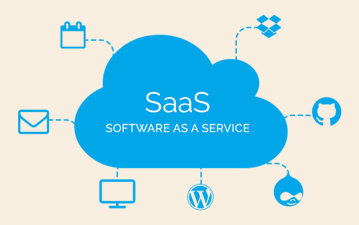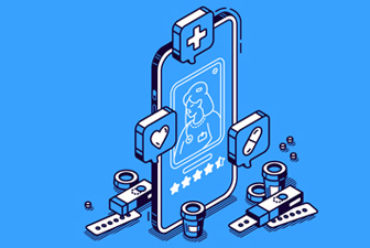Benefits of a SAAS

Benefits of a Software as a Service
By: Mustafa Rehman
May 25, 2020
Benefits of a Software as a Servic
What is software as a service (SaaS) and why it matters?
Even if someone has never heard the term Software as a Service (SaaS), they already know what it is. In fact chances are high that as you read this you are probably using some software as a service program. It’s everything from Google to Social Media Networks to large Enterprise Software.Most of the storage and processing for SaaS is being taken care of in the cloud. The cloud is actually composed of physical servers placed around the world by companies such as Amazon, Microsoft, Google and IBM etc. Since most of the work is being done in the cloud, the service is available to a wide array of devices. All your device needs is an internet connection and a common client such as a web browser. The cloud does not discriminate and does not require much to let you access it and interact with it. This gives SaaS great potential and capability.
Since the information is stored and processed in the cloud, a very large amount of people can access it simultaneously, for example, a picture on instagram or a tweet on twitter. The picture or tweet can be instantly seen by millions, all of whom can interact with it effortlessly. Information is updated in almost real time, allowing you to connect with people from all over the world!
This makes Saas a very powerful tool as you don’t need a powerful computer to do powerful tasks anymore. You could also rent a few servers on the cloud to help you carry out tasks that in the past could only be done by an on-premise supercomputer. It is quite amazing to think that we live in an age where everyone has access to supercomputing on the palm of their hands.
How can enterprises benefit from Software as a Service (SaaS) ?
The corporate mobile market within SaaS is expected to be worth $7.4 billion by 2021 which clearly reflects that Saas is playing a major role in the enterprise world. SaaS eliminates the cost of acquiring the hardware to build a server and then install the application and configure it, not to mention the maintenance associated. In SaaS, the user does not pay for the software itself. Instead, it works like a rental. They have the authorization to use it for a period of time and pay for the software as they go along.
There are a multitude of advantages of SaaS for enterprises;
- Reduced time & improved agility
- Lower costs
- Scalability and integration
- New releases (upgrades)
- Mobility & real time updates
- Backup & Security
- Try before you buy
Reduced time and improved agility
The speed of software deployment is increased massively as the software (application) is already installed and configured. The server is already set up and running in the cloud so there is no need to deploy physical hardware. The cloud resources are available when you need them which tends to shorten the IT projects resulting in less time to deliver the project and a quicker and more predictive time-to-market. Projects can be brought down from a matter of months to a few weeks.
Lower costs
In SaaS, the user does not pay for the software itself. Instead, it works like a rental. They have the authorization to use it for a period of time and pay for the software as they go along. The hardware and software costs are much lower compared to the traditional cloud due to the shared/multi-tenant environment in the cloud. Moreover the customer base can be increased as small and medium sized businesses who might not have been able to afford high licensing costs can also benefit. Lastly the maintenance costs are sharply reduced as the SaaS provider owns the cloud environment and can split it efficiently among its customers.
Scalability and integration
Cloud based SaaS solutions can easily be scaled due to the massive capacity of the cloud. Which means that the user will only have to update their subscription with their SaaS provider. They can also be easily integrated with other cloud based offerings as well. SaaS vendors create APIs to allow connections not only to internal applications like ERPs or CRMs but also to other SaaS providers. Since no physical hardware is involved, the process is very agile.
New releases (upgrades)
The traditional model usually forced the user to buy an upgrade package and install it but the upgrades happen in real time now. As soon as the provider has updated the software in their cloud, the new version is available to all the customers. The cost and time of these upgrades is much lower compared to the traditional model.
Mobility and real time information
Since all you need to access the software is an internet connection. The users can access the application from almost anywhere in the world. The application is updated in real time which means that everyone has access to the most relevant and up to date information.
Backup & security
While some may worry about the security associated with a non on-premise solution. It is highly likely that the cloud vendor has a much higher level of security than the enterprise themselves. The clouds are located in secure facilities located around the globe. Moreover as the data is being backed up by the cloud vendors, disaster recovery is much better than a local on-premise solution.
Try before you buy
A large number of SaaS solutions offer free trials of their products which means you can have a fair idea about the functionality and return on investment that you might be able to extract from the subscription of the software.
Conclusion
Saas is changing the IT infrastructure space and more and more companies are transitioning to this new technology due to the multitude of advantages being offered. Not only are we looking at reduced costs but also a better customer experience.
Learn more about Techlogix’s SaaS solutions in Education, Healthcare, Business & Finance.




